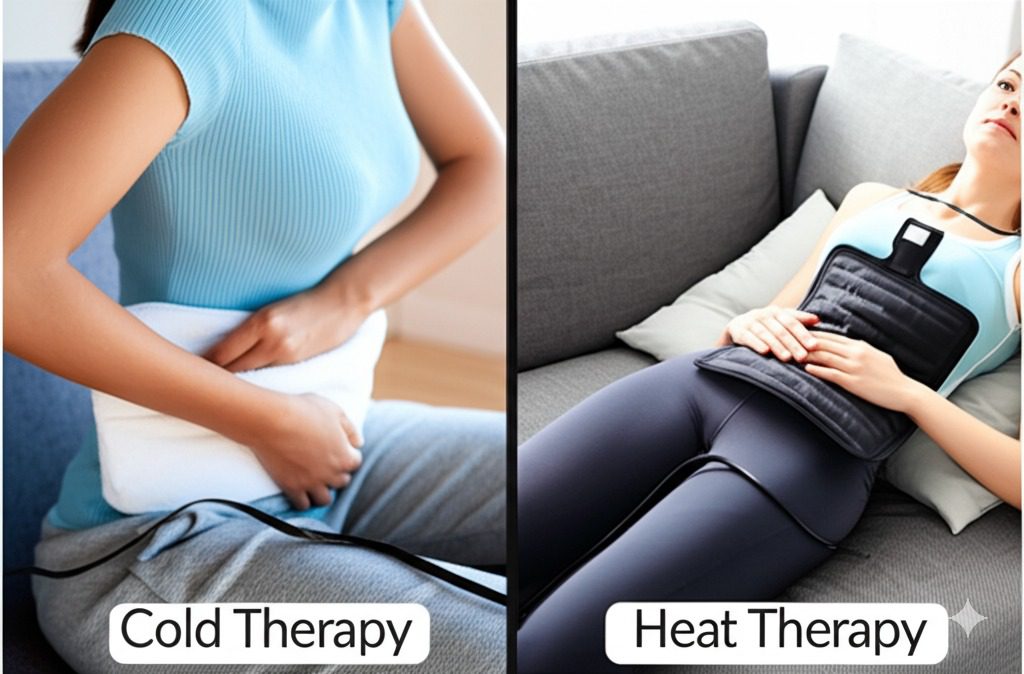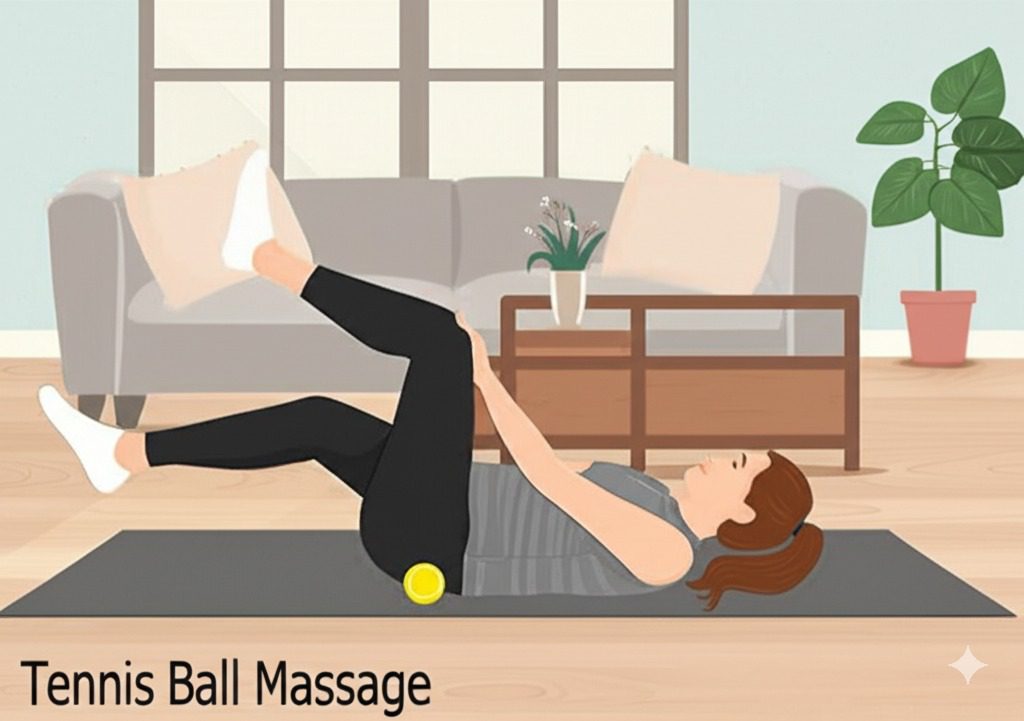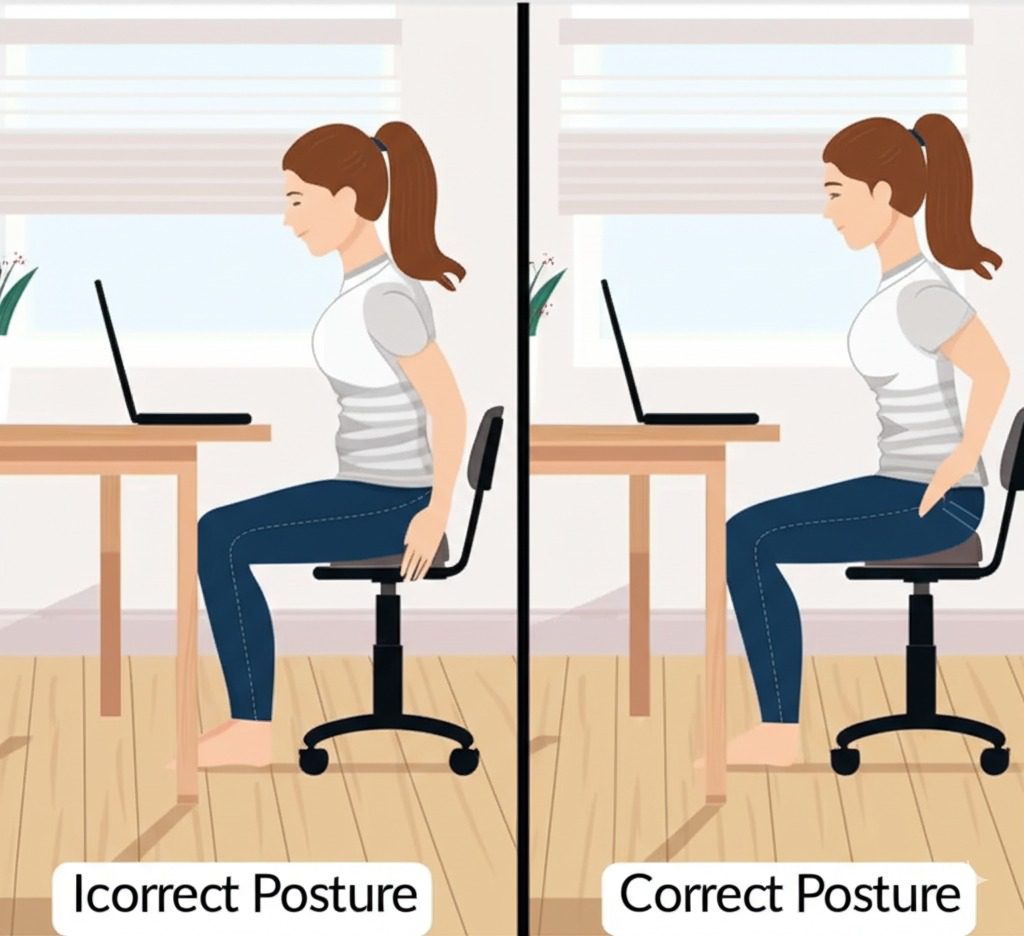Struggling with a sore lower back after a long day at work or an awkward movement? You’re not alone—lower back pain affects millions of people worldwide. Whether it’s due to poor posture, muscle strain, or a sedentary lifestyle, a sore lower back can make daily activities feel unbearable.
Affiliate Disclosure: This post contains affiliate links from Amazon, ShareASale, and iHerb. We may earn a commission at no extra cost to you if you make a purchase through our links. See our full Disclaimer for more details.
The good news? You can learn how to fix a sore lower back at home with simple, proven methods. In this guide, we’ll walk you through 5 effective techniques to relieve lower back pain naturally, from stretching exercises to heat therapy. These methods are designed to target the root causes of your discomfort and help you get back to your routine pain-free. Let’s get started with understanding why your lower back hurts and how to fix a sore lower back effectively!
Understanding Why You Have a Sore Lower Back
A sore lower back can stem from many causes. Muscle strain from heavy lifting, poor posture from slouching at your desk, or even stress that tightens your muscles can lead to discomfort. Other factors include a sedentary lifestyle, weak core muscles, or injuries like a slipped disc.
Symptoms often include a dull ache, sharp pain when moving, or stiffness that makes bending a chore. Chronic issues like sciatica or arthritis can also contribute, but for most people, a sore lower back is due to temporary strain. Understanding the cause is the first step to learning how to fix a sore lower back effectively.
Common Causes of a Sore Lower Back
Here are some common reasons for lower back soreness:
- Muscle Strain: Overexertion from lifting heavy objects or sudden movements can strain your lower back muscles.
- Poor Posture: Sitting or standing with a slouched back puts pressure on your spine, leading to soreness over time.
- Sedentary Lifestyle: Lack of movement weakens your core and back muscles, making them more prone to pain.
- Injury: Minor injuries, like a pulled muscle, or more serious ones, like a herniated disc, can cause persistent soreness.
- Stress: Emotional stress can cause muscle tension, particularly in the lower back, leading to discomfort.
How to Identify Your Lower Back Pain Triggers
Pinpointing what triggers your sore lower back can help you address the root cause. Keep a journal for a few days to note when the pain flares up. Does it happen after sitting at your desk for hours? Or after a workout?
Maybe it’s worse in the morning after sleeping on an old mattress. Identifying these patterns can guide you toward the right solution to fix a sore lower back. For example, if your pain spikes after sitting, you might need to focus on posture correction and ergonomic adjustments.
5 Proven Methods to Fix a Sore Lower Back
Method 1: Stretching Exercises to Fix a Sore Lower Back
Stretching is one of the most effective ways to fix a sore lower back. It improves flexibility, reduces muscle tension, and enhances blood flow to the area. Here are three simple stretches you can do at home:
- Knee-to-Chest Stretch: Lie flat on your back, legs extended. Gently pull one knee toward your chest, holding it with both hands. Hold for 20-30 seconds, then switch legs. Repeat 2-3 times per leg. This stretch targets the lower back and glutes, easing tension.
- Child’s Pose: Kneel on the floor, sit back on your heels, and stretch your arms forward while lowering your chest to the ground. Hold for 30 seconds, breathing deeply. This yoga pose stretches your lower back and promotes relaxation.
- Cat-Cow Stretch: On all fours, alternate between arching your back (cow) and rounding it (cat). Move slowly, holding each position for 5 seconds. Repeat for 1 minute. This stretch improves spinal mobility and reduces stiffness.

Pro Tip: Stretch daily, ideally in the morning or after long periods of sitting. Consistency is key to fixing a sore lower back. If you feel sharp pain during any stretch, stop immediately and consult a doctor, or try a TENS unit for additional relief.
for a Sore Lower Back
Stretching helps by lengthening tight muscles and improving circulation, which reduces inflammation and promotes healing. It also strengthens the muscles supporting your spine, preventing future soreness. Regular stretching is a great way to fix a sore lower back naturally.
Method 2: Hot and Cold Therapy to Ease Lower Back Pain
Hot and cold therapy is a simple, affordable way to fix a sore lower back. Cold therapy reduces inflammation and numbs pain, while heat therapy relaxes muscles and improves blood flow. Here’s how to use both:
- Cold Therapy: Apply an ice pack wrapped in a towel to your lower back for 10-15 minutes. Use this within the first 48 hours of noticing soreness, especially if there’s swelling or sharp pain.
- Heat Therapy: After 48 hours, switch to heat. Use a heating pad or a warm towel for 15-20 minutes. Heat is ideal for chronic soreness or stiffness, as it relaxes tight muscles.
- Alternating Method: For stubborn pain, alternate between cold and heat (10 minutes each) to get the benefits of both. This can

Pro Tip: If you don’t have a heating pad, a hot shower can work wonders. Let the warm water run over your lower back for 5-10 minutes to relax the muscles and fix a sore lower back. Alternatively, consider using a high-quality heating pad for consistent heat therapy.
Choosing Between Hot and Cold Therapy
Not sure which to use? If your sore lower back feels inflamed or swollen, start with cold. If it’s stiff or achy, go for heat. For ongoing pain, alternating both can provide the best relief.
Method 3: Massage Techniques to Relieve Sore Lower Back Pain
Massage can work wonders to fix a sore lower back by releasing muscle tension and improving circulation. You don’t need a professional masseuse—self-massage or using tools can be just as effective. Here’s how:
- Self-Massage with Your Hands: Use your fingers to gently knead the sore area in circular motions. Apply light pressure and focus on tight spots. Spend 5-10 minutes massaging your lower back.
- Tennis Ball Massage: Place a tennis ball under your lower back while lying on the floor. Roll gently over the ball to target knots and trigger points. Do this for 3-5 minutes, avoiding direct pressure on your spine.
- Massage Gun (e.g., Theragun): If you have a massage gun like Theragun, use it on a low setting for 5 minutes. Focus on the muscles around your lower back. Check out our ultimate guide to back pain relief for more tools to fix a sore lower back.

Pro Tip: Pair massage with stretching for better results. For example, do a Knee-to-Chest stretch after massaging to further relax your lower back muscles. For a more comprehensive approach, explore the Back Pain Breakthrough program for expert tips on managing back pain.
Benefits of Massage for a Sore Lower Back
Massage increases blood flow, which delivers oxygen and nutrients to sore muscles, speeding up recovery. It also reduces stress hormones like cortisol, which can contribute to muscle tension.
Method 4: Correcting Posture to Fix Lower Back Pain
Poor posture is a leading cause of a sore lower back, especially if you sit for long hours. Correcting your posture can prevent and fix lower back pain over time. Here’s how to improve your posture:
While Sleeping: Sleep on your back or side with a pillow under your knees (if on your back) or between your knees (if on your side). This keeps your spine aligned.
While Sitting: Sit with your back straight, shoulders relaxed, and feet flat on the floor. Use a chair with lumbar support or add a small pillow behind your lower back.
While Standing: Stand with your weight evenly distributed on both feet. Pull your shoulders back, tuck your chin slightly, and engage your core.

Pro Tip: Set a timer to remind yourself to check your posture every 30 minutes. Over time, good posture will become a habit, helping you fix a sore lower back permanently.
Ergonomic Tips to Support Posture
Invest in an ergonomic chair or a standing desk if you work long hours. Use a lumbar roll or cushion for extra support. If you’re on a budget, a rolled-up towel placed behind your lower back can make a difference.
Method 5: Magnesium Supplements to Soothe a Sore Lower Back
Magnesium is a natural muscle relaxant that can help fix a sore lower back by reducing muscle tension and inflammation. It’s available as a supplement or through magnesium-rich foods. Here’s how to use it:
- Magnesium Supplements: Take 200-400 mg of magnesium daily (consult your doctor first). Look for magnesium citrate or glycinate, which are well-absorbed. We recommend Nature Made Magnesium Citrate from iHerb, a reliable option for muscle health.
- Magnesium-Rich Foods: Add foods like spinach, almonds, avocados, and dark chocolate to your diet. Aim for 300-400 mg of magnesium daily through food to support muscle health.
- Topical Magnesium: Use magnesium oil or lotion on your lower back. Apply a small amount, massage it in, and leave it on for 20 minutes before rinsing. You can try this magnesium oil from MarketHealth for quick relief.

Pro Tip: Pair magnesium with a warm bath for enhanced relaxation. Add Epsom salts (rich in magnesium) to your bath and soak for 20 minutes to fix a sore lower back naturally.
How Magnesium Helps a Sore Lower Back
Magnesium regulates muscle contractions and reduces inflammation, which can ease soreness and prevent spasms. It also supports nerve function, which is crucial if your sore lower back is linked to nerve irritation like sciatica. For more on sciatica, read our guide on treating sciatica at home. According to a study on magnesium and muscle health, magnesium can significantly reduce muscle cramps and pain.
Quick Summary Checklist
| Method | Benefits | Frequency |
|---|---|---|
| Stretching | Loosens muscles, boosts range of motion | 10-15 mins daily |
| Hot/Cold Therapy | Reduces pain, inflammation | 10-20 mins per use |
| Massage | Improves blood flow, reduces tension | 5-10 mins daily |
| Posture Correction | Aligns spine, prevents strain | All day |
| Magnesium | Relaxes muscles naturally | Daily (supplement/food) |
When to See a Doctor for a Sore Lower Back
While these methods can fix a sore lower back in most cases, some situations require medical attention. See a doctor if:
- Your pain lasts more than 2 weeks despite trying these methods.
- You experience numbness, tingling, or weakness in your legs.
- The pain radiates down your legs (possible sciatica).
- You have a fever, unexplained weight loss, or other unusual symptoms.
A doctor may recommend imaging (like an X-ray or MRI) or physical therapy to address underlying issues. For more information on when to seek help, check out this guide from Mayo Clinic.
Red Flags to Watch For
Pay attention to these warning signs: severe pain that doesn’t improve with rest, loss of bladder or bowel control, or pain after a fall or injury. These could indicate a serious condition like a herniated disc or spinal injury.
Conclusion
A sore lower back doesn’t have to derail your day. With these 5 proven methods—stretching, hot/cold therapy, massage, posture correction, and magnesium—you can fix a sore lower back naturally and get back to your routine.
Start with the method that best suits your needs, and be consistent for the best results. For more in-depth strategies, explore our ultimate guide to back pain relief to discover additional tools and treatments. Ready to take control of your back health? Try these methods today!